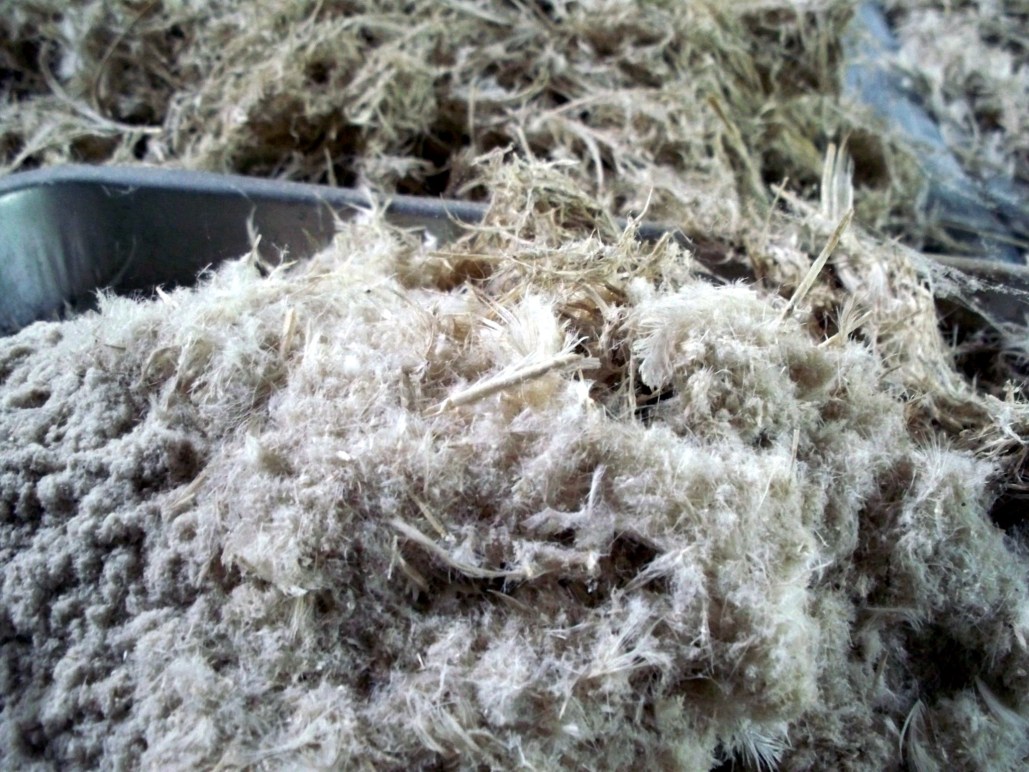Trash to Cash – Feather Meal and Pet Food Ingredients
The poultry industry in the USA is a high volume business. Annually, an estimated 8 billion broiler chickens are produced, resulting in almost 3 billion pounds of feathers. The resulting feathers could only be disposed of in two ways – sold cheaply to the large animal food industry or to fertilizer companies, or by paid disposal to landfills. A decrease in demand for animal by products as a large animal feed additive, and a rise in the cost of landfill usage fees combined to make lightweight feathers a heavy expense for the poultry industry. Lucky for them, there seems to be almost nothing that the pet food industry isn’t game to try as an ingredient.
Feather Meal, or “FM” as it is referred to in the industry, has long been used as a fertilizer. It has a high nitrogen content, and is also high in protein, but it is indigestible unless it is highly processed. There have been numerous attempts to use feather meal as a food additive for animals, but published studies as long ago as the 1980’s determined Feather Meal to be of “Low Nutritional Value” as a feed ingredient.
Beginning as early as 2000, there were rumblings within the pet food industry about a great new ingredient that was lowering costs for pet food manufacturers who used chicken and poultry meals as the basis for their foods. A German manufacturer, Goldmehl, had patented a revolutionary new method of Feather Meal processing for the pet food industry. They promised that it increase “feces scoring” in feeding trials. Feces scoring refers to the stool quality of dogs fed a diet based on a specific feed ingredient. In the case of feather meal, inclusion of more than 9% FM by dry weight resulted in dogs with a feces score of “1” – industry shorthand for explosive, watery diarrhea. Goldmehl’s patented Feather Meal would allow manufacturers to include up to 14% Feather Meal, with ‘acceptable’ feces scores.
The use of feathers as a pet food ingredient remained an underground rumbling until 2013, when Keith Levy, the President of Royal Canin USA, admitted in an interview with Forbes Magazine that Royal Canin had spent ten years developing a food that used feather meal as its primary protein source.
We have a team in France that is traveling the world to find ingredients. In this case it’s feather meal. It’s not only nutritious but can also be made very palatable to dogs. Feathers are broken down to an amino acid level and don’t have much of a taste. Then we add palatizers for taste. In this case, we have to be very careful not to provoke an allergic reaction.
Levy later in the interview mentioned that Royal Canin also uses hydrolized soy protein as a pet food ingredient, and that Royal Canin is “currently researching worm meal as a potential protein source for some of our foods in China”. Levy illustrated the best example of the Pet Food industry’s theory of ‘garbage in, pet food out’ when he said –
By using alternative sources of protein, we’re using something that would otherwise end up in a landfill.
Some ingredients, however, end up in landfills (or in your garden, as fertilizer) because they simply shouldn’t be used as a food ingredient, no matter how ‘cost effective’ they are. Feather Meal is primarily composed of insoluble keratin with high cystine content. Dogs suffering from a genetic condition called Cystinuria lack the ability to process cystine via the kidneys. Over time, cystine becomes concentrated in the urine, which leads to the formation of crystals – commonly referred to as kidney stones.
Owners of dogs afflicted with cystinuria, or of breeds prone to this condition or any other kidney related diseases, are advised to avoid foods containing feather meal. This means you’ll need to watch the labels for ingredients such as feather meal, poultry or chicken digest, and perhaps even poultry or chicken by products (I’m still awaiting confirmation from AAFCO on whether or not FM is now an allowable component in these last two ingredients).

